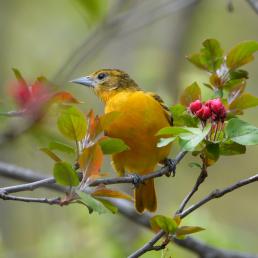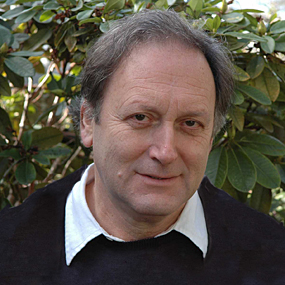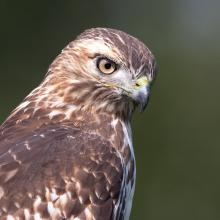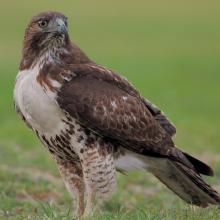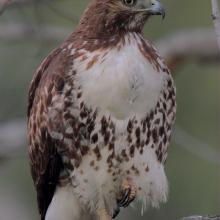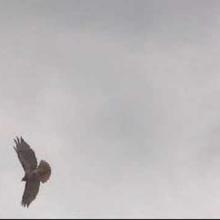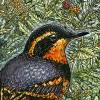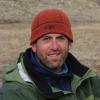

Join BirdNote tomorrow, November 30th!
Illustrator David Sibley and actor H. Jon Benjamin will face off in the bird illustration battle of the century during BirdNote's Year-end Celebration and Auction!
Some birds, like this Red-tailed Hawk, possess amazingly highly developed eyesight. Just what makes birds' eyes so special, their eyesight so remarkable? It has to do with the muscles that give them an astonishing ability to focus and to change focus. Birds have muscles that carry out both jobs, plus other muscles that change the shape of the cornea, too. And birds have exceptionally large eyes located on the sides of their heads, so they have a bird's eye view of almost all of their surroundings, almost all the time. Learn more at StanfordBirds.
BirdNote®
Bird’s Eye View II
Written by Bob Sundstrom
This is BirdNote!
[Red-tailed Hawk scream, repeated]
Some birds, like this Red-tailed Hawk, possess—according to naturalist Christopher Leahy—“probably the most highly developed eyesight that exists.”
Just what makes birds’ eyes so special, their eyesight so remarkable? Well, it has to do with the muscles that give them an astonishing ability to focus and to change focus. Our own ability to change focus relies on two separate actions. First, muscles change the shape of our eyes’ lenses. Then, we have to wait for the built-in resilience of the lenses to return them to their original shape.
[Comical sound of something squeezing and then popping back into shape]
Birds, however, have muscles that carry out both jobs, plus other muscles that change the shape of the cornea, too. As one writer puts it, this makes possible an “…all-but-instantaneous shift in focus from sharp perception of objects at the limit of visibility to those a few beak lengths away.” [Red-tailed Hawk scream]
If you compare our peripheral vision with that of birds, we again come up well short. Birds have exceptionally large eyes located on the sides of their heads, where they “command a nearly full field of view. A bird has almost all its surroundings under observation simultaneously and continuously, half with one eye, half with the other.”
No wonder they usually see you before you see them. [Red-tailed Hawk scream]
For BirdNote, I’m Frank Corrado.
###
Call of the Red-tailed Hawk provided by The Macaulay Library at the Cornell Lab of Ornithology, Ithaca, New York. Recorded by L.J. Peyton.
Ambient sounds by Kessler Productions
Ambient songbirds recorded in Eastern Washington by C. Peterson.
Producer: John Kessler
Executive Producer: Chris Peterson
© 2007 Tune In to Nature.org Revised for Oct. 2009
ID# 101007birdseye2KPLU
First quotation from: Leahy, Christopher. The Birdwatcher’s Companion to North American Birdlife. Princeton: Princeton University Press, 2004, p. 854.
Latter quotations from: Ogburn, Charlton. The Adventure of Birds. Excerpted in John Hay, ed., The Great House of Birds. San Francisco: Sierra Club Books, 1996.
